Ruminal Microbiota Determines the High-Fiber Utilization of Ruminants: Evidence from the Ruminal Microbiota Transplant
- PMID: 35924933
- PMCID: PMC9430676
- DOI: 10.1128/spectrum.00446-22
Ruminal Microbiota Determines the High-Fiber Utilization of Ruminants: Evidence from the Ruminal Microbiota Transplant
Abstract
The rumen, which contains a series of prokaryotes and eukaryotes with high abundance, determines the high ability to degrade complex carbohydrates in ruminants. Using 16S rRNA gene sequencing, we compared the ruminal microbiota of dairy goats with that in the foregut and colon of mice and found more Bacteroides identified in the rumen, which helps ruminants to utilize plant-derived polysaccharides, cellulose, and other structural carbohydrates. Furthermore, high-fiber diets did not significantly increase intestinal fiber-degrading bacteria in mice, but did produce higher levels of ruminal fiber-degrading bacteria in dairy goats. Through rumen microbe transplantation (RMT), we found that rumen-derived fiber-degrading bacteria can colonize the intestines of mice to exert their fiber-degrading function, but their colonization efficiency is affected by diet. Additionally, the colonization of these fiber-degrading bacteria in the colon may involve higher content of butyrate in the colon, protecting the colonic epithelial barrier and promoting energy metabolism. Overall, the fiber degradation function of rumen bacteria through RMT was verified, and our results provide new insights into isolating the functional and beneficial fiber-degrading bacteria in the rumen, providing a theoretical basis for the role of dietary fiber in intestinal health. IMPORTANCE Ruminants have a powerful progastric digestive system that converts structural carbohydrates into nutrients useful to humans. It is well known that this phenomenon is due to the fact that the rumen of ruminants is a natural microbial fermenter, which can ferment structural carbohydrates such as cellulose and hemicellulose and transform them into volatile fatty acids to supply energy for host. However, monogastric animals have an inherent disadvantage in utilizing fiber, so screening rumen-derived fiber-degrading bacteria as a fermentation strain for biological feed is needed in an attempt at improving the fiber digestibility of monogastric animals. In this study, a ruminal microbiota transplant experiment from goats to mice proves that ruminal microbiota could serve as a key factor in utilization of high-fiber diets and provides a new perspective for the development of probiotics with fiber degradation function from the rumen and the importance of the use of prebiotics during the intake of probiotics.
Keywords: dairy goats; fiber-degrading bacteria; high-fiber diet; mice; rumen microbe transplantation.
Conflict of interest statement
The authors declare no conflict of interest.
Figures
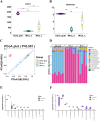
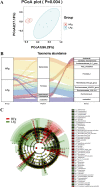
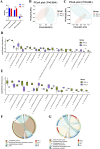
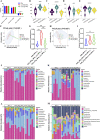
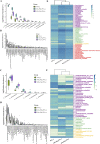
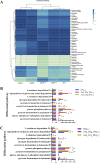
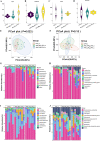
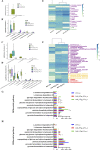
Similar articles
-
Associations among dietary non-fiber carbohydrate, ruminal microbiota and epithelium G-protein-coupled receptor, and histone deacetylase regulations in goats.Microbiome. 2017 Sep 19;5(1):123. doi: 10.1186/s40168-017-0341-z. Microbiome. 2017. PMID: 28927467 Free PMC article.
-
Ruminal microbiota-host crosstalks promote ruminal epithelial development in neonatal lambs with alfalfa hay introduction.mSystems. 2024 Feb 20;9(2):e0103423. doi: 10.1128/msystems.01034-23. Epub 2024 Jan 5. mSystems. 2024. PMID: 38179946 Free PMC article.
-
Dietary selection of distinct gastrointestinal microorganisms drives fiber utilization dynamics in goats.Microbiome. 2025 May 11;13(1):118. doi: 10.1186/s40168-025-02112-y. Microbiome. 2025. PMID: 40350460 Free PMC article.
-
Microbial and animal limitations to fiber digestion and utilization.J Nutr. 1997 May;127(5 Suppl):819S-823S. doi: 10.1093/jn/127.5.819S. J Nutr. 1997. PMID: 9164244 Review.
-
Recent advances in rumen microbial ecology and metabolism: potential impact on nutrient output.J Dairy Sci. 1990 Oct;73(10):2971-95. doi: 10.3168/jds.S0022-0302(90)78986-2. J Dairy Sci. 1990. PMID: 2178174 Review.
Cited by
-
Recent nutritional strategies and feed additives to stimulate proper rumen development in young goats.Transl Anim Sci. 2025 Mar 8;9:txae164. doi: 10.1093/tas/txae164. eCollection 2025. Transl Anim Sci. 2025. PMID: 40191692 Free PMC article.
-
Effects of increasing levels of dietary cation-anion difference on growth performance, nutrient digestibility, rumen fermentation, and rumen microbiota in fattening Hu sheep.Anim Nutr. 2025 Mar 6;21:119-128. doi: 10.1016/j.aninu.2024.11.026. eCollection 2025 Jun. Anim Nutr. 2025. PMID: 40487099 Free PMC article.
-
The Effects of Dietary Glycerol Fatty Acid Esters on the Production Performance, Serum Biochemistry, and Rumen Microbial Community of Crossbred Simmental Bulls.Animals (Basel). 2025 Jul 25;15(15):2194. doi: 10.3390/ani15152194. Animals (Basel). 2025. PMID: 40804985 Free PMC article.
-
Differential responses of rumen and fecal fermentation and microbiota of Liaoning cashmere goats after 2-hydroxy-4-(methylthio) butanoic acid isopropyl ester supplementation.Sci Rep. 2024 Apr 12;14(1):8505. doi: 10.1038/s41598-024-58581-y. Sci Rep. 2024. PMID: 38605045 Free PMC article.
-
Effects of Fermented Soybean Hulls on Reproductive Performance, Blood Physiology and Immune Parameters Along with Fecal Microbiota in Sows.Animals (Basel). 2024 Nov 25;14(23):3389. doi: 10.3390/ani14233389. Animals (Basel). 2024. PMID: 39682355 Free PMC article.
References
Publication types
MeSH terms
Substances
LinkOut - more resources
Full Text Sources

